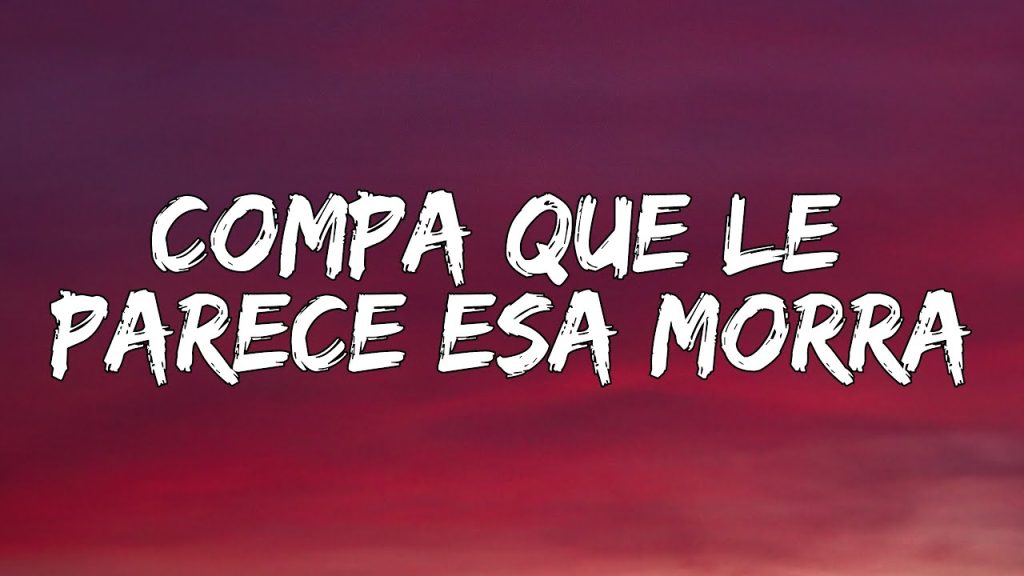Compa Que Le Parece Esa Morra: A Deep Dive into Mexican Urban Music

Compa Que Le Parece Esa Morra
Mexican urban music has experienced a significant boom in recent years, with artists blending traditional genres with modern sounds to create a unique and vibrant musical landscape. One such track that has caught the attention of music enthusiasts is “Compa Que Le Parece Esa Morra” (What do you think of that girl?) – a compelling song that combines catchy beats with thought-provoking lyrics. In this article, we will delve into the lyrics of this track, exploring its themes, cultural influences, and the impact it has had on the contemporary music scene.
Understanding the Artist:
To fully appreciate the meaning behind “Compa Que Le Parece Esa Morra” it’s essential to understand the artist behind the track. Mexican urban music has seen the emergence of many talented artists who use their music as a platform to express social issues, personal experiences, and cultural perspectives. Knowing the artist’s background provides valuable context for interpreting the lyrics.
The song is performed by an up-and-coming artist known for blending traditional Mexican sounds with contemporary urban beats. Their ability to seamlessly integrate elements of regional music with modern production techniques contributes to the unique flavor of “Compa Que Le Parece Esa Morra”
Themes Explored in the Lyrics:
Romance and Relationships:
The central theme of the song revolves around romance and relationships. The lyrics paint a vivid picture of the singer’s feelings towards a particular girl, exploring the excitement, passion, and sometimes the complexities that come with romantic involvement.
“¿Qué le parece esa morra?/
Que no sabe que ya me enamoró/
Que no puede dejar de bailar/
Cuando suena el acordeón.”
These lines suggest a sense of infatuation and admiration for the girl, highlighting the power of music, specifically the accordion, as a source of joy and connection.
Cultural Identity:
Embedded within the lyrics are elements of cultural identity, reflecting the artist’s roots and the rich musical heritage of Mexico. The mention of the accordion, a traditional instrument commonly associated with regional Mexican music, adds a layer of authenticity to the track.
“Cuando suena el acordeón/
Todos quieren bailar/
El sabor de la región/
En su piel se quedará.”
These lines not only celebrate the accordion as a musical symbol but also emphasize the regional flavor that defines the cultural identity of the girl being sung about.
Social Connection Through Music:
The recurring reference to the accordion and the communal act of dancing highlights the social aspect of music. In Mexican culture, music and dance are often communal activities that bring people together. The lyrics suggest that the girl’s connection to the music is a shared experience, creating a bond between the singer and those around them.
“Todos quieren bailar/
El sabor de la región/
En su piel se quedará.”
These lines convey the idea that the joy of dancing to regional music is not just a personal experience but a collective one that leaves a lasting impression on everyone involved.
Impact on the Contemporary Music Scene:
“Compa Que Le Parece Esa Morra” has made a notable impact on the contemporary music scene, contributing to the ongoing evolution of Mexican urban music. The fusion of traditional and modern elements in the track has resonated with a diverse audience, bridging generational and cultural gaps. The catchy beats and relatable lyrics have elevated the song to a position where it is not only enjoyed in social settings but also appreciated for its cultural significance.
The success of this track also underscores the growing global interest in Latin American music. As artists continue to experiment with diverse sounds and incorporate traditional instruments into contemporary compositions, they contribute to the globalization of genres that were once confined to specific regions.
Conclusion:
“Compa Que Le Parece Esa Morra” stands as a testament to the dynamic and ever-evolving nature of Mexican urban music. Through its exploration of romance, cultural identity, and the social connection facilitated by music, the song captures the essence of a vibrant musical landscape. As artists continue to push boundaries and redefine genres, it is evident that Mexican urban music will remain a powerful force, shaping the soundscape of both local and global audiences.
